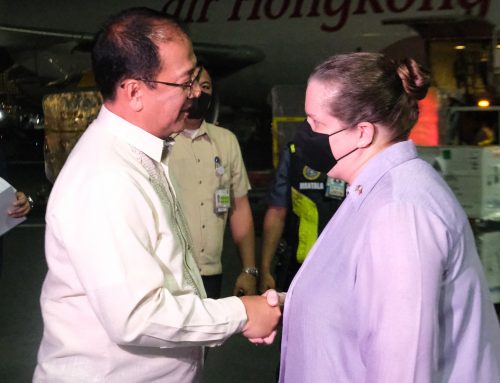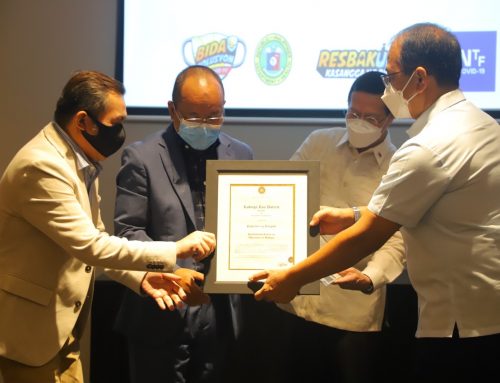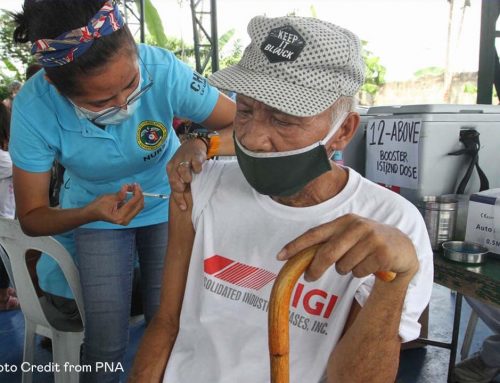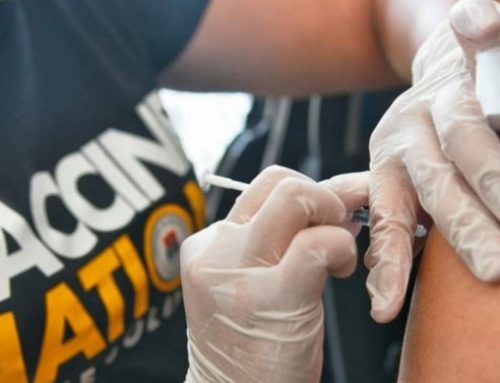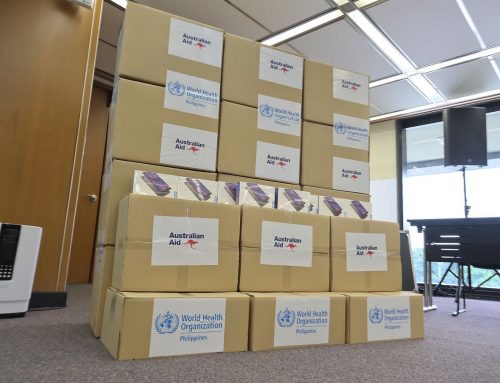PASAY CITY (3 October 2021) – More than 2.7 million of fresh vaccines have arrived over the weekend, bringing the total vaccines deliveries to 77,410,640 doses as of Sunday, which according to Secretary Carlito G. Galvez, Jr., the Chief Implementer of the National Task Force Against COVID 19 and Vaccine Czar, is another milestone to the country’s vaccination drive.
“With the over 77-million vaccine doses we have received since February, we are moving closer to vaccinating half of our eligible population. This will be another major milestone in our vaccine rollout,” Galvez said.
“And by the end of October, we project that the country would have received a total of 100 million vaccine doses (since February), which could fully inoculate about 50 million Filipinos. This brings us closer to our goal of achieving herd immunity or population protection for us to safely exit from this pandemic as soon as possible,” he added.
On Saturday, the US government through the COVAX facility has delivered 889,200 shots of Pfizer-BioNTech vaccines. At early dawn on Sunday, another 1,813,500 doses of Pfizer have also arrived.
Galvez thanked the World Health Organization (WHO), the COVAX facility, the US government, and UNICEF for helping to build the Philippines’ vaccine supply.
“I would like to thank the World Health Organization, UNICEF, COVAX, the GAVI Alliance and the US Government for another donation. We highly appreciate your efforts for ensuring the delivery of these vaccines despite the limited global vaccine supply and logistical challenges you face. On behalf of President Rodrigo Roa Duterte and from the Filipino people, we thank you for your act of compassion and generosity,” the Vaccine Czar said.
Galvez said the collective effort “is another testament that nothing is impossible if we put all our acts together to combat this pandemic.”
Procured vaccine deliveries
The Vaccine Czar bared that the country is expected to receive millions of procured vaccines this October. Among the vaccine brands are Pfizer, Moderna, and Sinovac.
“We are so happy na mukhang tuluy-tuloy na ang 100 million [doses] by the end of October. We will be receiving more from Pfizer and Moderna,” he said.
For COVAX, the international initiative had committed to deliver more than 10 million doses of Pfizer-BioNTech vaccines to the Philippines starting the third quarter of this year.
The bulk of these supplies were donated by the United States through the US-COVAX sharing agreement.
“Over the course of the next couple of days, we will see 5.5 million more doses arrive in the Philippines, both here in Manila but also down in Cebu and Davao,” US Embassy Chargé d’affaires Heather Variava said.
“The United States is so happy to be able to provide support not just to Metro Manila but to the greater Philippines,” she added.
Galvez said that the latest shipment of Pfizer vaccines will be deployed outside the National Capital Region (NCR) such as Regions IVA and III.
The succeeding deliveries of vaccines will be directly deployed to regions VII and XI.
Expanding priority groups
Meanwhile, the bulk of the country’s vaccine supply is composed of Sinovac-made doses with cumulative deliveries of 41.5 million doses.
Of this supply, 39.6 million doses were procured by the national government, one million doses were donated by the Chinese government, while 900,000 doses were purchased by the City of Manila and the Federation of Filipino Chinese Chamber of Commerce and Industry Inc.
“This shipment of Sinovac will be equitably distributed to all regions particularly ‘yung mga kokonti pa ang vaccinated,” said Galvez.
“Mabibigyan natin ng access ang lahat ng ating priority groups sa pagdating ng mga vaccines,” he added.
*Prioritizing seniors and people with comorbidities*
WHO Representative to the Philippines Dr. Rabindra Abeyasinghe underscored the need to prioritize the A2 (senior citizens) and A3 (persons with comorbidities) groups.
“Although the case numbers are declining, there is still a big population of elderly and comorbid [people] who need to be protected,” Abeyasinghe pointed out.
“As we recalibrate, we recognize that we need to bring back economic activity. But the optimum use of vaccination will be to increase the coverage of priority groups,” he said.
“This way, we can bring back a sustainable opening of the economy,” Abeyasinghe added.
According to the National Vaccination Operations Center, as of October 2, a total of 46,251,087 doses have been administered nationwide. Out these, at least 24,513,343 doses administered as first shot, while there are 21,737,744 as second dose.
Vaccine rollout for the youth
With the country’s increasing vaccine supply, Galvez said the government is confident that it can include youth aged 12 to 17 in the vaccine rollout.
“Meron na tayong enough supply for the pilot implementation. ‘Yung pilot rollout naman natin initially ay sa Metro Manila muna. Kayang kaya ‘yun,” said Galvez.
“We want to open up our schools, and by vaccinating our children, we can sustain that,” Galvez said.
The Vaccine Czar said that based on the NTF’s initial estimate, this age group (12 to 17) has a target population of about 12.7 million.
Variava also welcomed the expansion of vaccine coverage in the Philippines, saying that the vaccinations of adolescents in the United States, which started in May, have been successful and safe.
The Philippines will be using Pfizer and Moderna vaccines for the vaccination of this age group, as the Food and Drug Administration has granted both brands an Emergency Use Authorization for youth aged 12 to 17 years old.
Michelle Lang-Alli, U.S. Agency for International Development (USAID) health director, noted that many have been spared from severe hospitalization and death because of the government’s aggressive vaccine rollout.
“With this current surge we’re having, it could have been much worse particularly here in NCR (National Capital Region) if we [did] not [have] the vaccines and the efforts that are being made,” Lang-Alli, said.
Galvez agreed with the USAID official, saying that he expects the country’s vaccination rates are anticipated to go up following the steady vaccine arrivals.
“This delivery is very timely, (because) when the cases are going down, the LGUs (local government units) can concentrate now on vaccinating more people,” Galvez said. END



